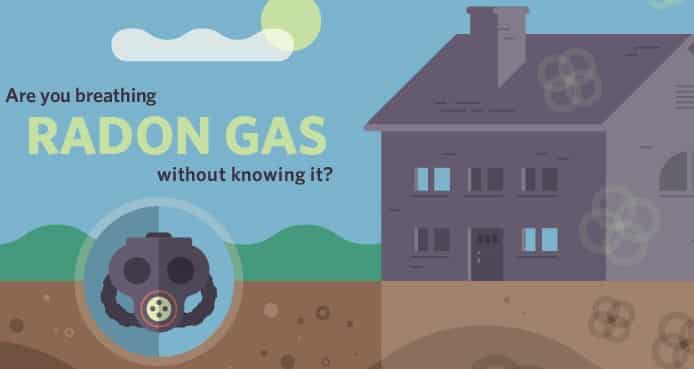
Radon - A silent, deadly pollutant.
Radon is a radioactive gas that occurs naturally in the ground and causes cancer. You cannot see, smell or taste it. Knowing if your home has unsafe levels of it is crucial to your health. According to the U.S. Environmental Protection Agency (EPA), nearly one out of every 5 homes in the United States has elevated radon levels. In Indiana, 1 out of 3 homes have elevated radon levels and in Illinois, 40% of homes contain elevated levels of the harmful gas. Furthermore, according to the Surgeon General, radon is also the second leading cause of lung cancer in the country today. Radon finds a way into your home through cracks and unsealed areas of your home. Since air duct pipes lie close to the ground, radon can find a way into your home if they have holes, cracks or any signs of deterioration. Learn more about radon and it's harmful effects here.
Selling a home? Test it first!
It's best to test for radon before putting your home on the market. If you have already performed the test in your home, make sure the test was done correctly by reviewing the "Radon Testing Checklist" found here. If it was, provide the test results to your buyer.
What do you do if your home has not been tested? It's a good idea to test it right away by hiring a qualified individual or company to perform it. If high levels of radon are found, don't panic because a radon problem is fixable! Knowing the results of your test allows you to enter negotiations with a clear picture of all the steps you have taken to correct it.
Buying a home? Make sure you know if radon is present!
You have found your dream home so it's important to find out if radon is a problem. If the sellers provide results, read them carefully. Firstly, take into consideration items such as the timing of the test, location of the test and who performed the test. Secondly, if the sellers don't provide test results, it's a good idea to pay for testing yourself. Although you're paying out of pocket, knowing the results gives you peace of mind and great bargaining power during negotiations. You may also negotiate the testing into the contract by including provisions on where, when and who will pay for the cost of it.
What if I'm buying or building a new home?
Building a new home is exciting, as you have chance to design your dream home. A very important component to building your dream home is selecting a trustworthy builder. When choosing a builder, talk to them about using radon-resistant materials and features where appropriate. Gas permeable layers beneath the slab, plastic sheeting, and proper seals are simple and inexpensive ways to help maintain acceptable radon levels. Moreover, since radon occurs naturally in the soil, every new home should be tested for radon as soon as possible after moving in!
What exactly is a "high" level of radon?
The EPA estimates that the average indoor radon level is about 1.3 pCi/L (picocuries per liter.) A picocurie is a measure of the rate of radioactive decay of radon. So the higher the picocurie, the higher the amount of radioactivity in the air from the radon. Homes with a 4 pCi/L or greater should be corrected, as these levels contribute to increased risk of cancer. The goal is to reduce radon levels to 2 pCi/L or less. Hiring a qualified and credentialed radon specialist to analyze test results and provide a recommendation is the best way to lower the radon levels in your home.
If you suspect a radon problem in your home, give our team a call! Our underground air duct lining, along with a proper radon mitigation system, will lower your radon level to an acceptable one. Leaving you with nothing but clean, healthy air for you and your family!
